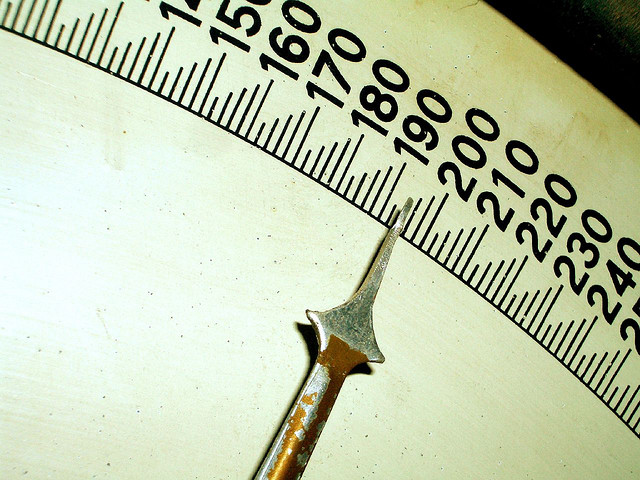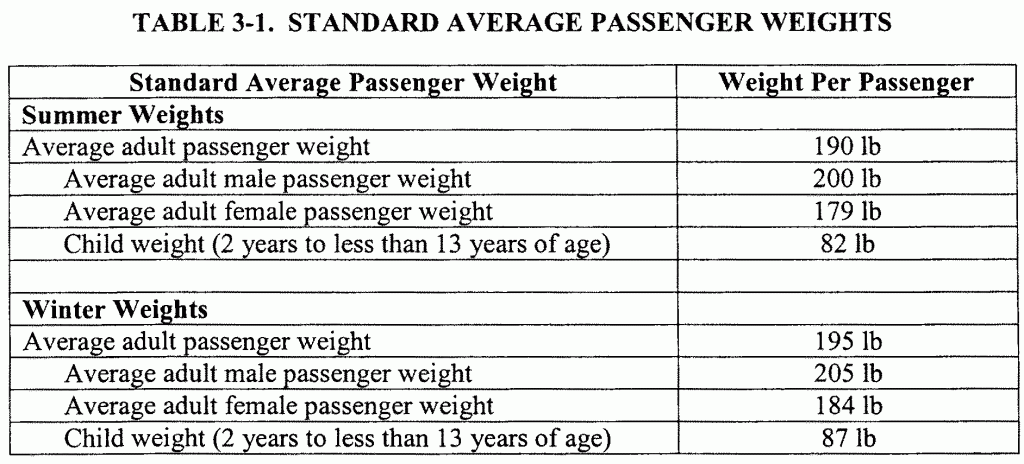Weighty issues for fliers

As so many of us get bigger, how should passenger weight be estimated? (photo: Fatty Tuna CC, some rights reserved)
Have you ever flown on a really small plane where airline staffers careful weigh the luggage, load the cargo hold for balance, and also ask each passenger what she, or he, weighs?
Oh, the competing impulses! On the one hand, one might be tempted to low-ball something that feels like a rather personal number. On the other hand, if that sort of vanity means a higher risk of a plane crash, maybe total honesty should carry the day, eh? Maybe one’s own number should even be padded, in case that obviously-vain person next in line plans to shade the facts?
When you consider that people, on average, are getting heavier – a lot heavier – keeping tabs on this does become important.
Anyway, you may have read about a small regional airline that is now ticketing by weight. As reported by Lucy Craymer for the Wall Street Journal, it’s now “Weigh more, pay more on Samoa Air“. The passenger weight formula is US $0.92 per kilo, or $0.42 per pound, per flight.
The model offers some pluses: slim adults and children will pay less, for example. Many Samoans are no slouches in the size department and the airlines says the larger passengers will also be allotted more space. In any event, Samoa Air’s Chief Executive Chris Langton told the WSJ that his company’s pay-by-weight system is here to stay.
“We are like a shopkeeper; we are selling weight. But with the weight goes the responsibility of being able to seat the passenger comfortably”
Or, as presented on Samoa Air’s website:
Samoa Air, Introducing a world first:
‘Pay only for what you weigh’!
We at Samoa Air are keeping airfares fair, by charging our passengers only for what they weigh. You are the master of your Air’fair’, you decide how much (or little) your ticket will cost. No more exorbitant excess baggage fees, or being charged for baggage you may not carry. Your weight plus your baggage items, is what you pay for. Simple.
The Sky’s the Limit!
The idea has generated a small flurry of discussion. This April 8th business article in the New York Times called the notion a non-starter in the U.S.:
Imagine the chaos of standing in line at a departure gate, waiting to step on a scale along with 150 other passengers (or 550 passengers on a big A380), one by one. On the other hand, weight in general is a serious concern for airlines — the concept of flight being a matter of basic physics. Basic economics also counts, with jet fuel prices at nearly record levels.
Here’s an older article that discusses aviation weight guidelines, including the possibility that passenger weight contributed to a Jan 2003 crash in North Carolina that killed all 21 passengers and crew. (More details on Air Midwest flight 5481 accident analysis.)
The current Times article (cited above) goes on to discuss the way weight formulas are calculated now:
The latest revision came in 2005, when the F.A.A. set individual weight averages — including seasonal averages for the weight of summer or winter clothing and an average of 16 pounds per passenger for carry-on bags — at around 200 pounds for males, 179 pounds for females, and 76 pounds for children under 13.
If you love rules, number and charts, dive in by reading more about the FAA Advisory Cicular (AC) 120-27D, Aircraft Weight and Balance Control. (Note: I think, but am not positive, that this version remains in effect today. If that’s wrong, please add a correction in the comment section.)
So many of us are bigger these days! Plus more and more passengers try to escape checked-bag fees by bringing fairly heavy carry-on items aboard. Do those estimation formulas seem safe enough to you? I suspect they may be behind current realities. (And I say that as someone who is contributing to the problem too, thanks to middle-age spread.)
Weight creep continues to be an insidious problem in personal health and many other areas. Including calculating airplane carrying capacity of “average-sized” people.








